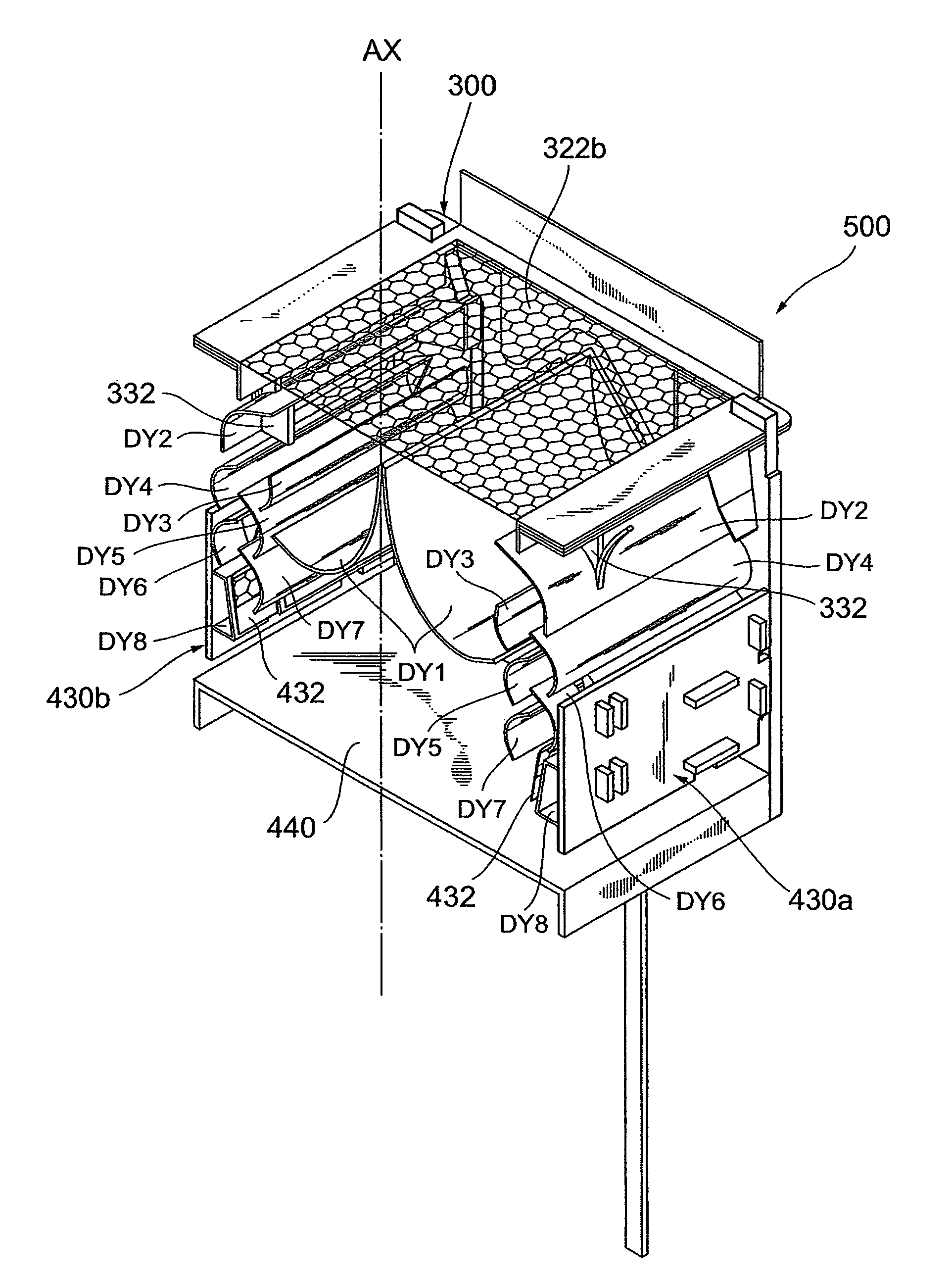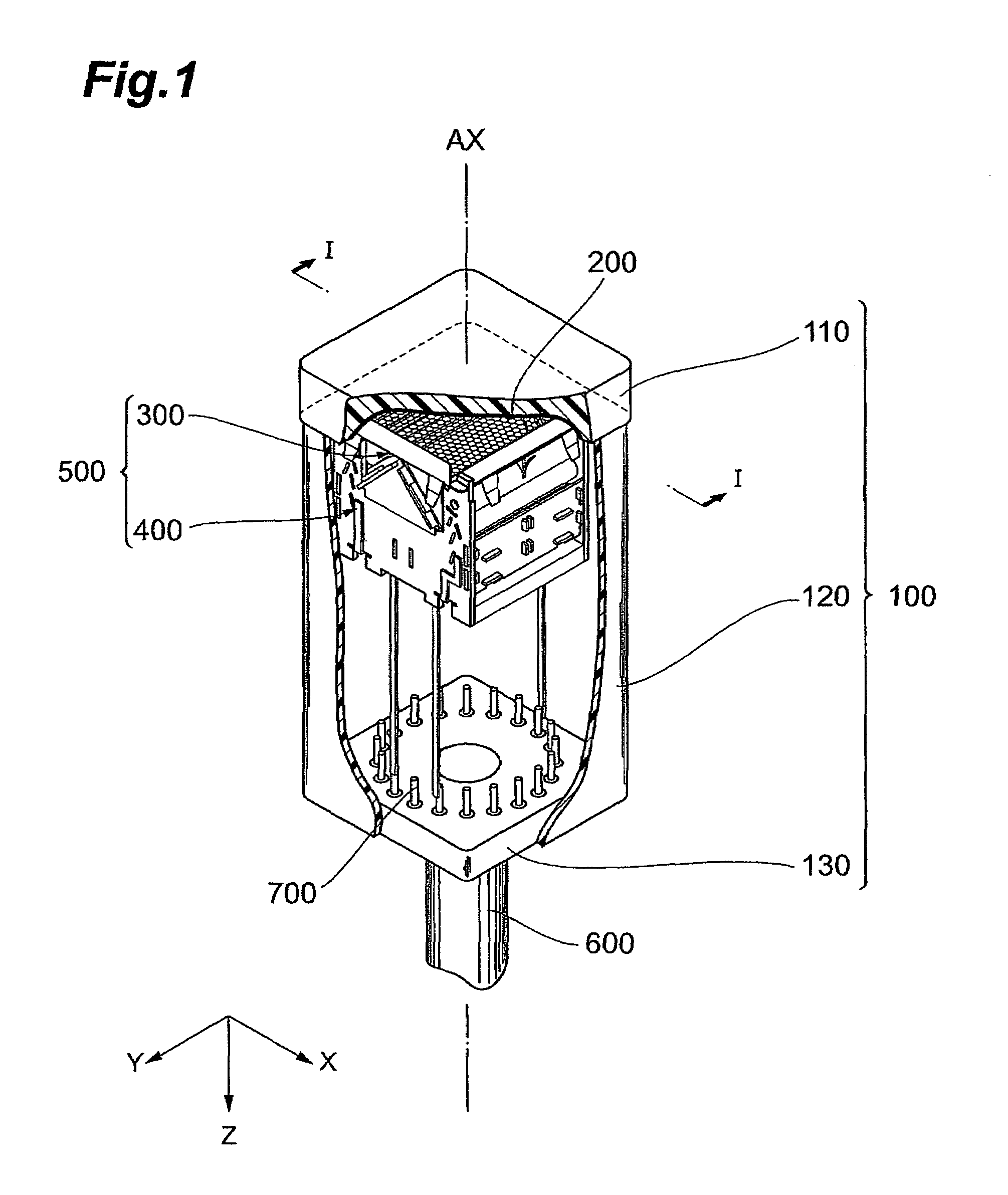Photomultiplier having multiple dynode arrays with corresponding insulating support member
a photomultiplier and dynode technology, applied in the field of photomultipliers, can solve the problems that the presence of such stray photoelectrons cannot be ignored, and no improvement had been made in regard to the spread of average electron transit time differences among the electron multiplier channels, so as to improve the high-speed response properties of the whole multi-channel photomultiplier, reduce electron transit time differences, and improve the electron transit time differences in each electron multiplier
- Summary
- Abstract
- Description
- Claims
- Application Information
AI Technical Summary
Benefits of technology
Problems solved by technology
Method used
Image
Examples
Embodiment Construction
[0031]In the following, embodiments of a photomultiplier according to the present invention will be explained in detail with reference to FIGS. 1, 2A-2B, 3-4, 5A-5B, 6, 7A-8B, 9, and 10A-11B. In the explanation of the drawings, constituents identical to each other will be referred to with numerals identical to each other without repeating their overlapping descriptions.
[0032]FIG. 1 is a partially broken-away view of a general arrangement of an embodiment of a photomultiplier according to the present invention. FIGS. 2A and 2B are an assembly process diagram and a sectional view, respectively, for explaining a structure of a sealed container in the photomultiplier according to the present invention.
[0033]As shown in FIG. 1, the photomultiplier according to the present invention has a sealed container 100, with a pipe 600, which is used to depressurize the interior to a predetermined degree of vacuum (and the interior of which is filled after vacuum drawing), provided at a bottom port...
PUM
 Login to View More
Login to View More Abstract
Description
Claims
Application Information
 Login to View More
Login to View More - R&D
- Intellectual Property
- Life Sciences
- Materials
- Tech Scout
- Unparalleled Data Quality
- Higher Quality Content
- 60% Fewer Hallucinations
Browse by: Latest US Patents, China's latest patents, Technical Efficacy Thesaurus, Application Domain, Technology Topic, Popular Technical Reports.
© 2025 PatSnap. All rights reserved.Legal|Privacy policy|Modern Slavery Act Transparency Statement|Sitemap|About US| Contact US: help@patsnap.com



